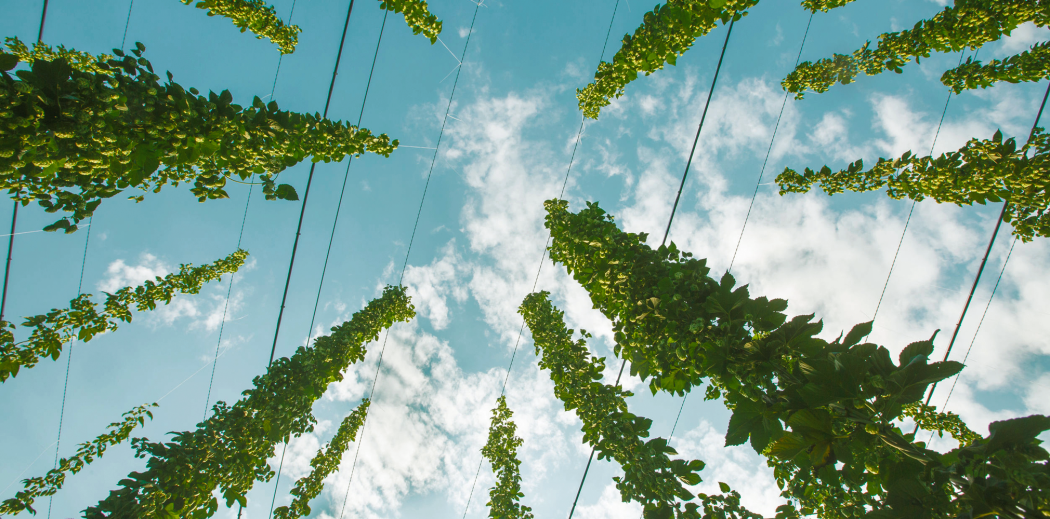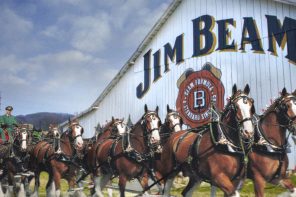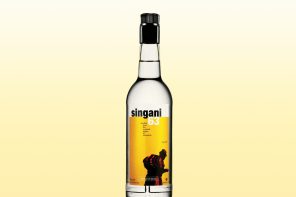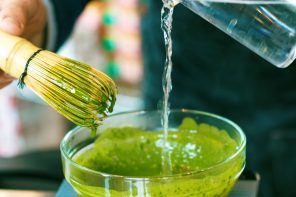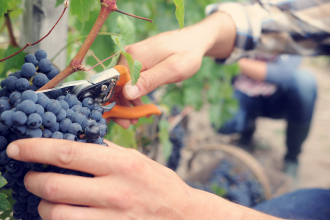In the same way that the majority of the world’s fine wine grapes are Vitis vinifera, we get our hops from Humulus lupulus. And as with grapes, there’s an absurd number of hop varieties. Numbers aside, there are a few considered a cut above the rest, the noble hops. Specifically, these are aromatic hops that fall lower on the bitterness scale (due to lower alpha acid levels) and are many a brewer’s first choice for the flavors they impart in beer. These are the traditional European hops, landrace varieties that have been tried and true for centuries.
What exactly are hops anyway? They’re the flowers of the common hop plant. Hops give beer its flavor while also providing antibacterial properties that keep undesirable beasties from running riot during the brewing process and spoiling the beer. Here’s a quick look at the four noble hops.
Hallertauer Mittlefrüh
This floral, herbal, spicy variety is named for the Hallertau region of Bavaria, which is by all accounts the single largest area in the world dedicated to planting hops. Hallertau Mittlefrüh has a long, storied history in Germany as one of the oldest varieties used in the brewing process and is considered the crème de la crème of the nobles. Alas, Mittlefrüh is lamentably susceptible to fungal diseases like wilt or mildew. Wilt, like downy and powdery mildew, is one of several hop hazards that can crop up and cause a headache for farmers. A fungal disease that can strike many hop varieties, the different types of wilt disease can be caused by everything from bacteria to fungi to different insect vectors.
To that end, it has largely been replaced by Hersbrucker in Hallertau, a hardier hop that has come to dominate the region since the late 20 th century. These days you won’t encounter Mittlefrüh as often as in times past. Rather, attempts have been made to develop more disease resistant versions which preserve its oh so desirable aromatic profile.
Beer styles: German Pilsner, German Lager, Pale Ale, Wheat
Tettnanger
Originating from Tettnang in southern Germany’s Baden-Württemberg, not far from Lake Constance, Tettnanger is prized for its versatility in addition to its distinctive fine aromas of spice, herbs and citrus. Though German wilt can spell disaster for it, Tettnanger is downy mildew resistant,which is helpful for growers in the humid, wet climate. A popular hop for an incredible variety of beers, Tettnanger is well-deserving of its claim to the hop nobility.
Beer styles: Lager, Pilsner, Pale Ale, Hefeweizen, Kolsch, Abbey Ale, Bock, and others.
Spalt
Spalt is virtually only grown in Bavaria’s (you guessed it) Spalt region where its presence can be traced back to 14th century Germany. In the mid-1500s, Spalt was awarded the hop seal of quality, the first of its kind. Like the appellation system today, the hop seal was used to signify and guarantee quality standards. Compared to the other nobles, Spalt is reasonably disease resistant. Peppery, earthy, with a pleasant herbal quality, it’s used to flavor many styles of beer and is the traditional hop for Altbier.
Beer styles: Lager, Pilsner, Helles, Pale Ale, Hefeweizen, Alt Bier, and others.
Saaz
More than the other nobles we’ve covered, Saaz is synonymous with a specific style: Czech pilsner. This mild, earthy, subtly herbal hop gets its name from the town of Žatec, Czech Republic, called Saaz in German. You’ll encounter Saaz in many, if not most pilsners and not just those from the Czech Republic. It’s a worldwide favorite regardless of the fact Saaz is a mediocre bittering hop; Saaz’s appeal lies in its unique aromatic qualities, something anyone who enjoys a pilsner from time to time can attest to.
Beer styles: Pilsner and lagers mostly but it has been used in a variety of styles.
The noble hops are used for a cornucopia of beer styles from Belgium to Brazil, so odds are you’ve already had the chance to try most, if not all of them. If not, there’s no time like the present!

